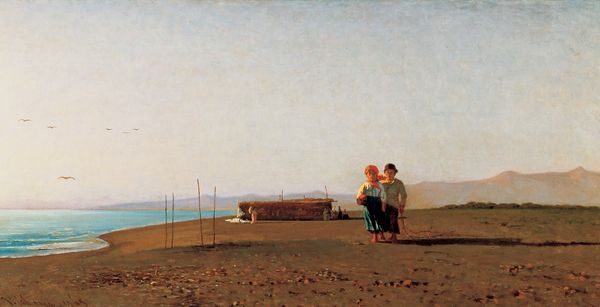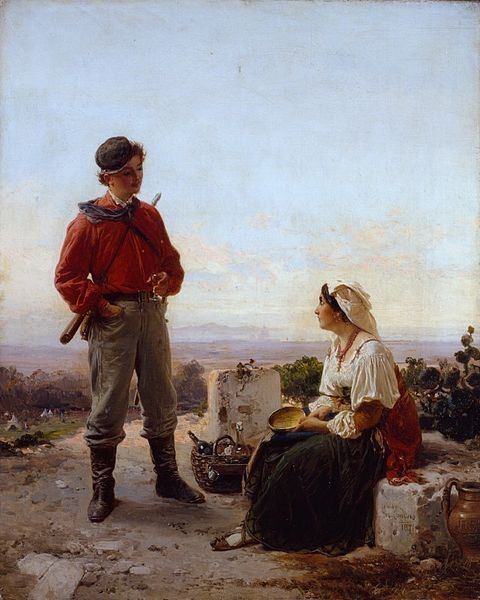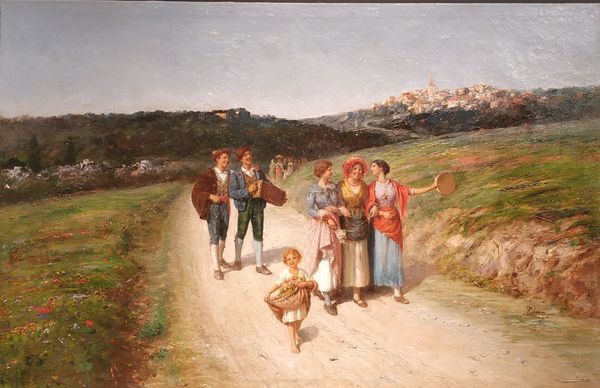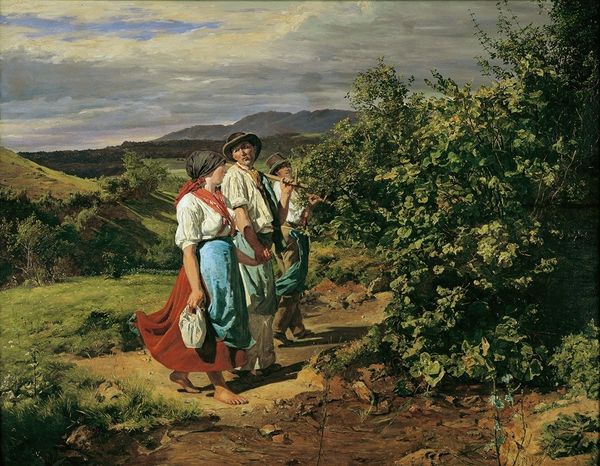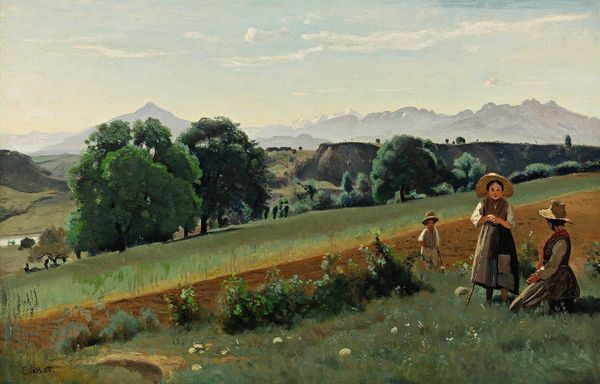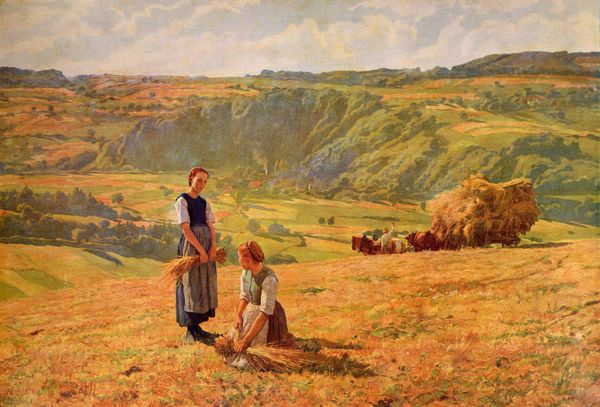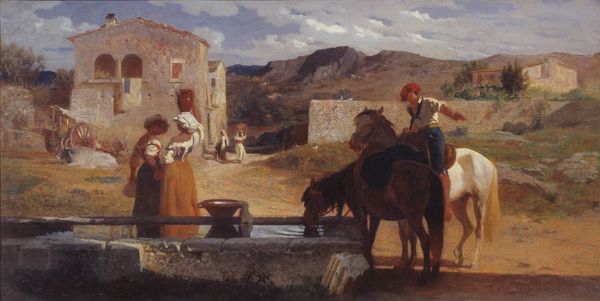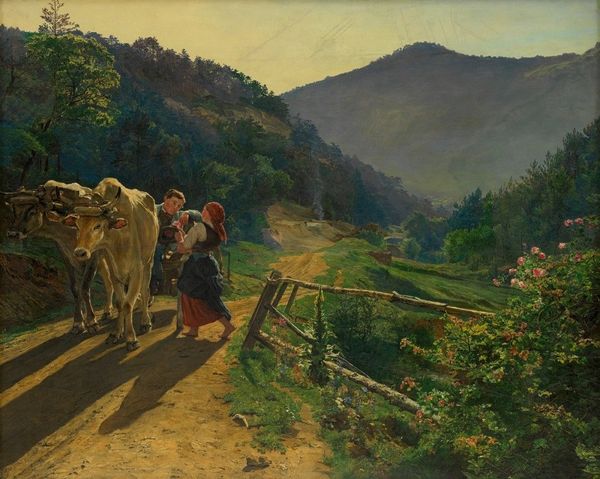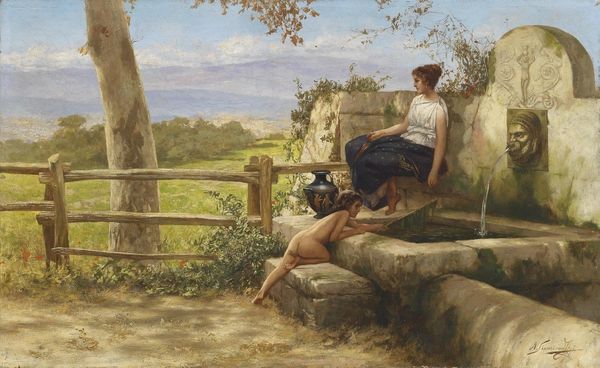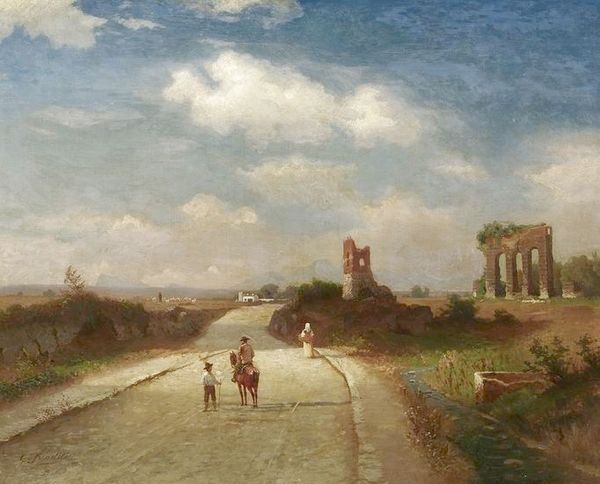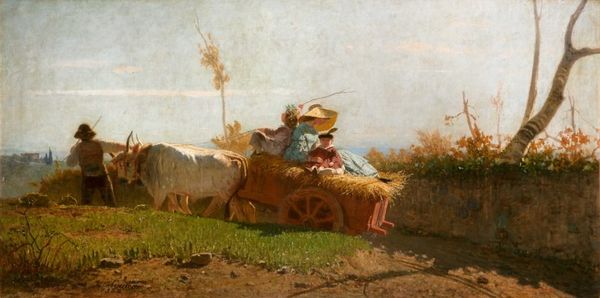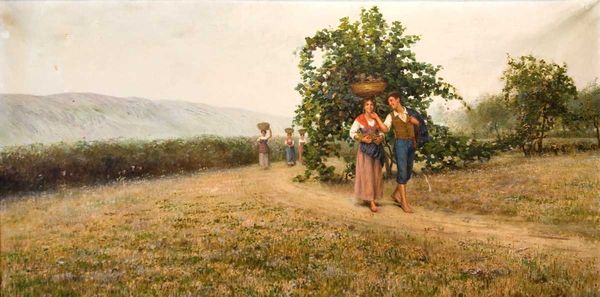
painting, oil-paint
#
flâneur
#
painting
#
oil-paint
#
landscape
#
figuration
#
nature
#
green background
#
romanticism
#
genre-painting
#
realism
Copyright: Public domain
Curator: "Idillio Campestre" is how Pasquale Celommi titled this landscape painting, likely created sometime in the late 19th century, although a precise date is not specified. Editor: There's a charming simplicity here, isn't there? It’s primarily rendered in oil, but its overall tone makes it look quite folksy. A soft idyllic scene, full of the textures of rural life. Curator: Absolutely, Celommi captured the burgeoning trend of flânerie within genre paintings. You see this interest in depicting everyday life infused with a romantic sensibility quite a bit as people explored their changing relationships to industrialization and the countryside. Editor: I’m drawn to the tangible qualities – the way he uses visible brushstrokes to give life to the dusty road. You can practically feel the texture of the rough wool on those sheep and that handmade quality hints at their economic reality. Curator: Indeed, that road is central. It visually divides the land while literally shaping their interactions. Consider its role within the wider social context, acting as both a connective passage and potential site for social interactions such as the rendezvous between these two young herders. Editor: These materials speak of labor and landscape – I wonder where Celommi sourced his pigments. Were they locally derived, or reflective of broader, perhaps exploitative, trade routes from which the colors and their cost reflected global capital flows? Curator: That’s a really astute point! Celommi's composition reflects both Realist and Romantic ideologies; this "rustic idyll" naturalizes class relations. Did he do so to celebrate the Italian countryside, or obscure the labor necessary to survive? Editor: Precisely, so are we consuming the scene as a depiction of authentic rural living or simply observing some propaganda intended for privileged consumption? We should remember that paintings themselves were materials manufactured through a specific and specialized type of work. Curator: I agree; we're dealing with a fascinating tension. The painting serves to naturalize that lifestyle within a historical context where industrial growth challenged those traditions. Editor: Considering the artist's social position is key. With more research into the means of production – both agricultural and artistic - we could draw new conclusions. Curator: "Idillio Campestre", a work that continues to inspire discourse regarding nature and societal forces. Editor: Definitely food for thought for us, and for all of you listening.
Comments
No comments
Be the first to comment and join the conversation on the ultimate creative platform.
